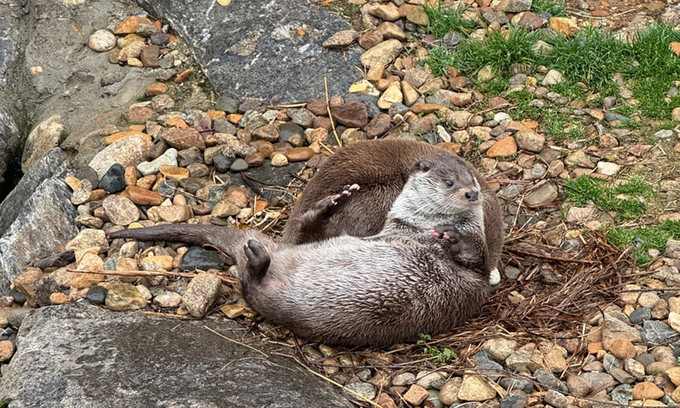Otters, designated and protected as Endangered Wildlife Class Ⅰ and Natural Monument No. 330 In Korea, despite their beautiful appearance, they are the main predators of rivers and feed mainly on fish. They prefer areas with clean water and abundant food resources, which confirms their habitat. The area forms a stable riverine ecosystem. In addition, due to its ecologically important position and its charm to attract people’s attention, it is used as a flagship species representing the ecosystem in many areas, including Mt. Myudeunsan.
One species of otter (Lutra lutra) lives in Korea. The body of an otter in adulthood is about 1 m long, and the tail occupies about half of the body. Unlike other mammals, they live primarily in the aquatic world, have webs between their toes, and spend a lot of time in water, so their fur has a double fur structure to maintain body temperature and make them waterproof.
After the Korean War, otter populations were greatly reduced by fur poaching and habitat destruction due to urbanization and industrialization, so they could only be found in deep mountain valleys or on breeding farms. However, recently citizen reports and news articles have often reported otters being spotted around the trails we often walk and even downtown. In 2016, otters were captured by a drone camera for the first time in Dancheon, downstream of Paldang Dam, and there was also a newspaper article that said that in 2022, 15 otters lived in the Han River area of Seoul.
The arrival of otters in the city may be seen as a positive sign for the restoration of human-otters relations, but on the other hand, it may be an inevitable choice for otters whose habitat has been lost due to continuous urban development. Effective recovery and healthy coexistence of otter populations will require research from multiple perspectives.
Jeonju Lee, an expert in the Climate and Environmental Biology Research Division of the National Institute of Biological Resources
(ⓒ Segye Ilbo & Segye.com, unauthorized reproduction and redistribution prohibited)

